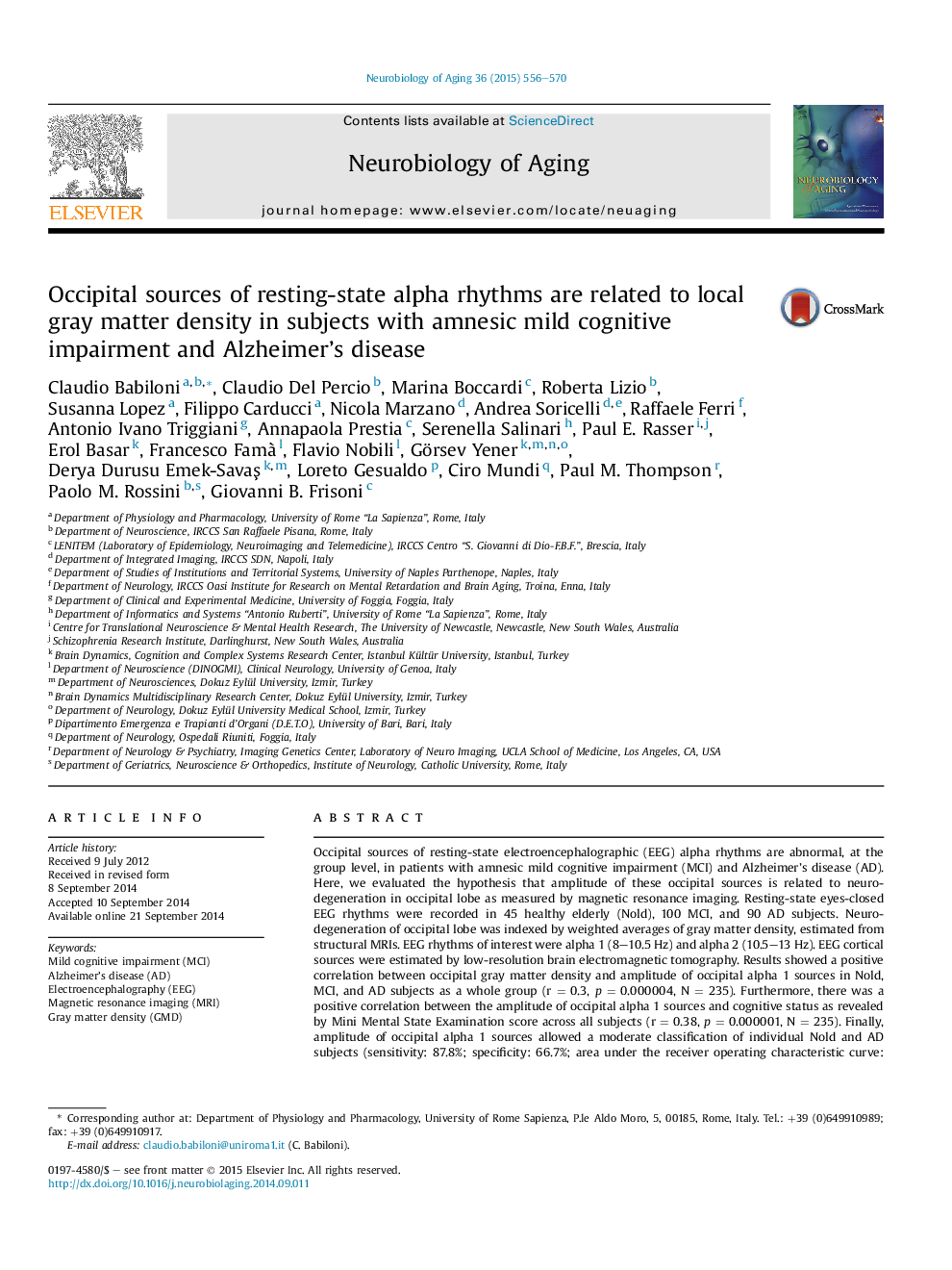| Article ID | Journal | Published Year | Pages | File Type |
|---|---|---|---|---|
| 6804639 | Neurobiology of Aging | 2015 | 15 Pages |
Abstract
Occipital sources of resting-state electroencephalographic (EEG) alpha rhythms are abnormal, at the group level, in patients with amnesic mild cognitive impairment (MCI) and Alzheimer's disease (AD). Here, we evaluated the hypothesis that amplitude of these occipital sources is related to neurodegeneration in occipital lobe as measured by magnetic resonance imaging. Resting-state eyes-closed EEG rhythms were recorded in 45 healthy elderly (Nold), 100 MCI, and 90 AD subjects. Neurodegeneration of occipital lobe was indexed by weighted averages of gray matter density, estimated from structural MRIs. EEG rhythms of interest were alpha 1 (8-10.5 Hz) and alpha 2 (10.5-13 Hz). EEG cortical sources were estimated by low-resolution brain electromagnetic tomography. Results showed a positive correlation between occipital gray matter density and amplitude of occipital alpha 1 sources in Nold, MCI, and AD subjects as a whole group (r = 0.3, p = 0.000004, N = 235). Furthermore, there was a positive correlation between the amplitude of occipital alpha 1 sources and cognitive status as revealed by Mini Mental State Examination score across all subjects (r = 0.38, p = 0.000001, N = 235). Finally, amplitude of occipital alpha 1 sources allowed a moderate classification of individual Nold and AD subjects (sensitivity: 87.8%; specificity: 66.7%; area under the receiver operating characteristic curve: 0.81). These results suggest that the amplitude of occipital sources of resting-state alpha rhythms is related to AD neurodegeneration in occipital lobe along pathologic aging.
Keywords
Related Topics
Life Sciences
Biochemistry, Genetics and Molecular Biology
Ageing
Authors
Claudio Babiloni, Claudio Del Percio, Marina Boccardi, Roberta Lizio, Susanna Lopez, Filippo Carducci, Nicola Marzano, Andrea Soricelli, Raffaele Ferri, Antonio Ivano Triggiani, Annapaola Prestia, Serenella Salinari, Paul E. Rasser, Erol Basar,
